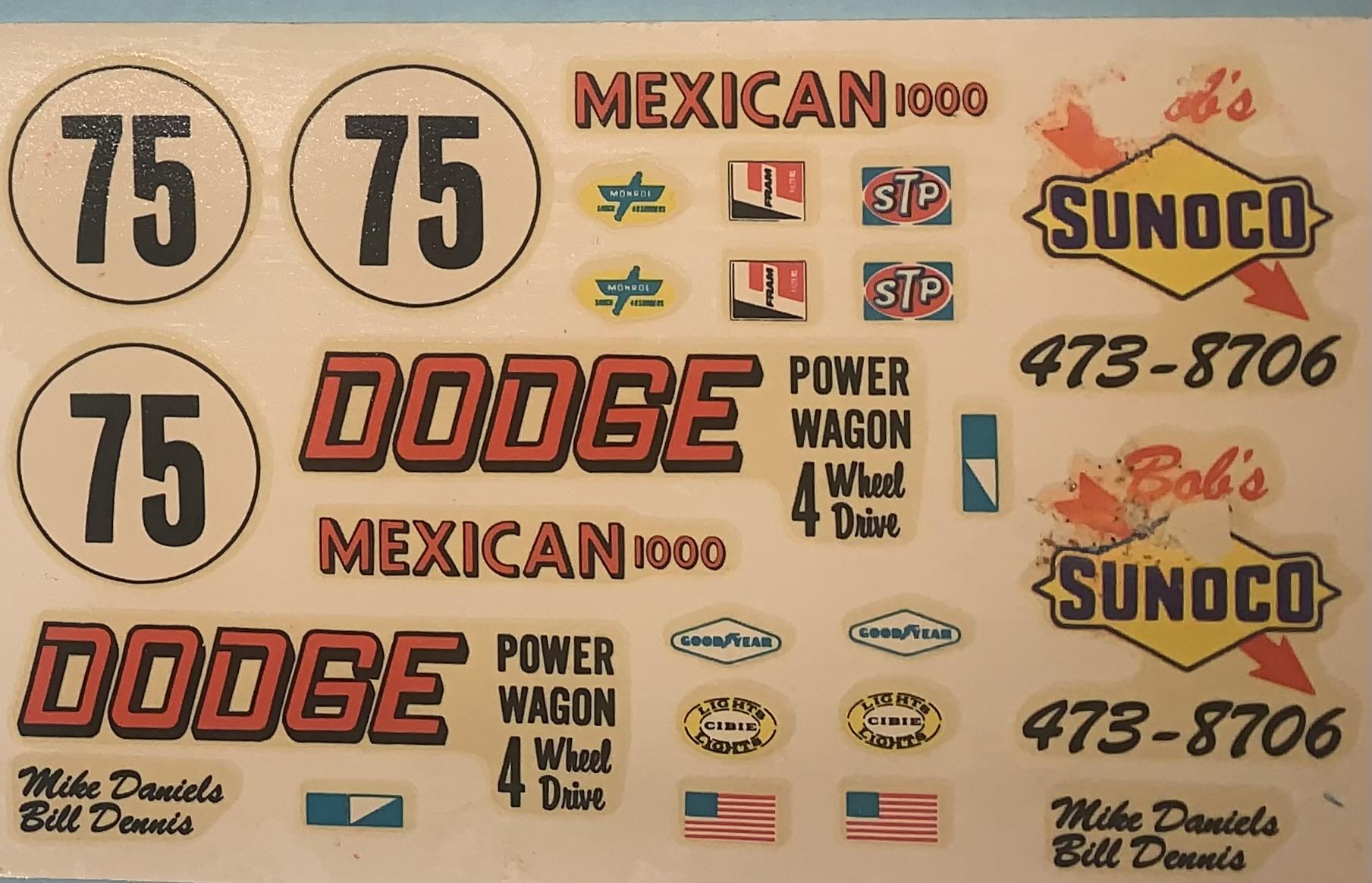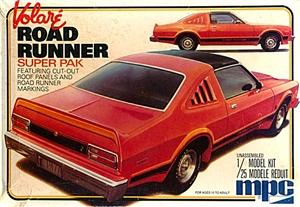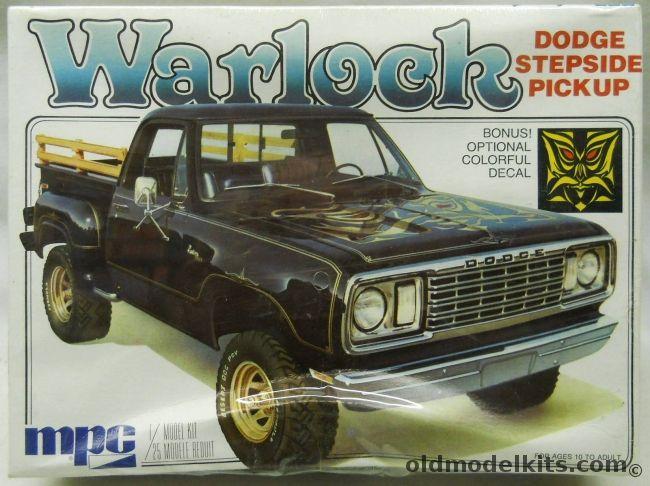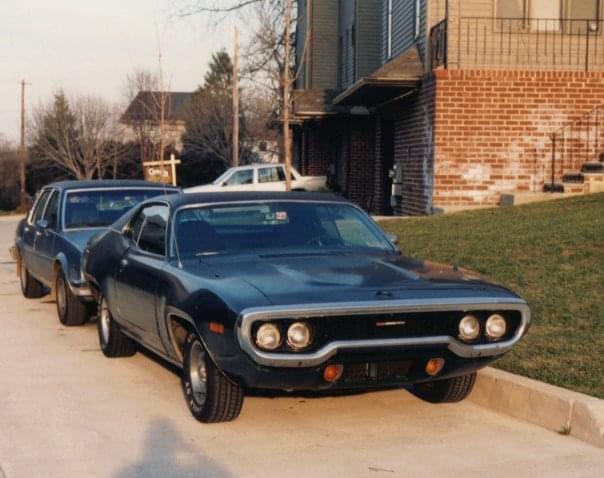-
Posts
1,202 -
Joined
-
Last visited
Content Type
Profiles
Forums
Events
Gallery
Everything posted by CapSat 6
-
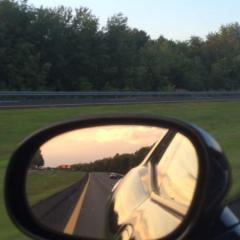
MPC Dodge Trucks. Baja Brute and Off Road Camper
CapSat 6 replied to stavanzer's topic in Truck Kit News & Reviews
Do you want the original issue decals? I have a set, but they are blemished (on the Sunoco & service logos). I was eventually going to scan them. I doubt mine are useable, but maybe they could be scanned. Which version were you going to build? You might be able to piece together something like the “Mexican 1000” version using old Cady decals (for the gumballs & some race contingencies), perhaps. The graphics look just generic enough that you might be able to put something together on your computer and print them on decal paper. I think eventually you might see Round 2 do a longbed 4x4, and when they do, they could very well reproduce elements of some of the early release original decals (Baja racer, service truck, etc.). -

MPC Dodge Trucks. Baja Brute and Off Road Camper
CapSat 6 replied to stavanzer's topic in Truck Kit News & Reviews
And now, we wait A lot of the Baja Brute is already there. It would be nice if earlier ‘72-‘76 dashes, hoods, tailgates and grilles were tooled up. I still wish they would have fixed the cab a bit though- where the grille and bumper mate up. A few tabs added on the inner fenders to hold the grille and bumper in place would really help. I would like to see Round 2 release a ‘78 Macho Wagon- 4x4 powertrain, Warlock wheels and tires, Sweptline bed (long or short, although a short bed Sweptline was never done by MPC back in the day), full decal set, and a new/more accurate roll bar. They could offer it in a retro box that would look like the old Warlock, LRX, Firebird Blackbird and Volare Road Runner Super Pak boxes- a mix of factory promotional photos of the real vehicle and illustrations, on a white background. Those probably were my all time favorite boxes, as I saw them a lot when I was a kid. I wonder why MPC never did the Macho back in the day, it would have been a natural for that series. -

Michaels getting rid of models?
CapSat 6 replied to gbdolfans's topic in General Automotive Talk (Trucks and Cars)
It seems that the Michael’s Secret Markdown is real. I went to one this morning. There were no tags on the kits or the shelves, but sure enough, many kits scanned at $3.00 or so. A few kits didn’t scan as reduced. I was hoping for a Hemi Dart, but that was still $29.99. I would buy every one I found if they were $3.00! The AMT Super Stones Ford Pickup was still regular price, as well as the Batmobile kit. I did see the AMT ‘70 Chevelle, ‘69 Tornio Cobra, ‘67 Drag Fairlane, Revell ‘69 Super Bee, Revell early Bronco, ‘83 Hurst Olds, Revell GMC Pickup with plow, and ‘66 Impala were marked down to about $3.00. The Foose ‘65 Impala was marked down to $10, still a great deal if you are looking for one. I tested this out by buying a few , it’s legit. -
The original annual kits that the trailer came with (‘68 and ‘69 Coronets, ‘70 Challenger) were the same way. You always had to use whatever leftover wheels were in the kit after you built the car. Skinny tires, steel wheels and maybe small plain round “Moon” style caps would be the ticket for the trailer. I’m building one now and found some old junk tires and wheels for mine.
-
The Barracuda was last released as a curbside (promo and Craftsman-style kit). It would be nice to have it back, but rather than a straight-up clone of the old MPC kit, thought should REALLY be given to at least reshaping the front inner fenders, and creating an engine that will look better than what the old MPC kits had. Sticking to the same basic look of the original chassis and engines might have been acceptable with the Coronet and Demon, but these were greater weaknesses for the Barracuda tool. I believe that Round 2 could work up something for the Barracuda tool that can both capture the “annual-style build experience” and also be better in the details than the old Annuals were. For instance, basing the inner fender shapes on what they have in the AMT ‘70 Challenger, and creating a new Hemi engine that looks more like the one in their ‘68 Road Runner kit. I am sure they would work on the body (bad headlight buckets, missing front turn signal lenses), as the body on the Demon was a vast improvement over the old annnual. Bringing the Super Charger back with such improvements would also be great. While they are at it, they could come up with another body tool for a SE model.
-
I’m not sure what you mean. The 1/18’s were only diecasts. I think they might have offered a Diecast kit to assemble about 20 years ago, either the Warlock or the LRX. The last time the Warlock was offered as a 1/25 kit was about 1979-ish. The Little Red (2 wheel drive, exhaust stacks, no bed rails) came back around 1994, and was offered a few times after that.
-
Round 2 has released several Warlocks and Little Reds over the years in 1/18. I think they did a Warlock of some kind pretty recently, and I know one of their latest releases is a short bed Sweptside pickup.
-

Mpc Plymouth 68 cornet hardtop R/t with trailer
CapSat 6 replied to 66c10's topic in Car Kit News & Reviews
The little details do not go unnoticed. These releases have been fantastic. Thank you, Steve!!! -

Mpc Plymouth 68 cornet hardtop R/t with trailer
CapSat 6 replied to 66c10's topic in Car Kit News & Reviews
I just rewatched the build video. It looks like tread plate detail was added to the inside bottom of the trailer. That’s a nice little detail that makes the new one match the original trailer from the annual kits (and the new trailer looked a little bare in there…). -

Mpc Plymouth 68 cornet hardtop R/t with trailer
CapSat 6 replied to 66c10's topic in Car Kit News & Reviews
The convertible came with both an uncut stock hood and a custom hood with cutout. I’m sure that’s what we’ll have in the hardtop. It looks like he’s gonna build this one as the drag version. :) -

Mpc Plymouth 68 cornet hardtop R/t with trailer
CapSat 6 replied to 66c10's topic in Car Kit News & Reviews
The top of the box lid seems to call out a police light bar. Pieces of this were present in the convertible kit. I’m not sure if the original ‘68 had one, but I know the ‘69 and ‘70 kits did. I hope they include police decals of some sort. I have seen a few originals built up as Cop Cars and they look pretty cool! -
Regarding MPC’s ‘71-‘72 Road Runner, I think the clone program would be great, with a few caveats: 1) the original body was good at best. Improvements would be needed: lower grille detail should be added, the windshield area should be strengthened (I used to see a LOT of unbuilt and built kits with warped or curled windshield areas), and especially on the ‘71, the front bumper and grille were shaped a little weirdly. 2) to maximize bang for the buck from the new tooling, ‘71 and ‘72 versions should be offered. One body can be tooled up for both years. The side marker turn signals can be left off of the body, decals can be supplied for the ‘71’s signals, and very small clear castings can be offered for the ‘72’s “Corporate” items. The ‘71’s should not be sunken into the body sides like they are rendered in MPC’s and Monogram’s kits in the first place- on ‘71 B Bodies, these were flush with the body sides. New pieces can be offered for Road Runner or GTX lower rocker mouldings. Decals can represent body emblems (and extra points for offering “Satellite” and/or “Satellite Sebring Plus” emblems and striping). 3) the chassis was so-so on these, like they were on all of the annuals of the period. A better brake booster, as well as add on pieces for the lower control arms and sway bars could be done to enhance the realism of the chassis. 4) the engine in these kits was ok for the time, and by the ‘80’s reissue, perhaps a little weak. It would be nice if they cloned the much, much nicer engine (or at least the air cleaner) from the AMT ‘71 Charger for this kit, but based on what I have seen with the ‘68 Coronet and ‘71 Demon kits, this will probably not happen. 5) in 1:1, these were perhaps the cars with the widest array of options available that Chrysler (or any other manufacturer) has ever made. They had numerous options for trim, striping, wheels, hoods, interior (bucket or bench seats with multiple textures and materials, console, power windows, and Chrysler’s cassette deck). Round 2 could develop multiple variations with different powertrains (383/400, 440+6, Hemi, 340) and options that could boost the desirability of each release. At the very least, offering the Cassette deck with dictaphone in scale would be a baller move on Round 2’s part.
-

No talk about the Round2 1971 Dodge Demon ?
CapSat 6 replied to gtx6970's topic in Car Kit News & Reviews
So far, judging by the images in the video, I think this one looks pretty good. The body is FAR superior to the original annual. The box contents almost match the original precisely, except mostly with better parts (the new side mirrors and body look great, the chassis I don’t have a problem with except for the molded in drive shaft, but I really wish they based the engine on the one from the AMT Duster). The spoof parts aren’t here, but I don’t think they are missed. The total experience is just like having one of the annual kits, except with better assembly, decals, overall quality and accuracy, and without the worry of preserving it versus building it. It’s not quite like a modern kit, though. If this is what it takes to get a Demon, then I’m fine with it. The original annual did not have custom wheels. The new Cragars do look a little funky, but then again, A/Body small-bolt Cragars usually looked a little weird in 1:1. I’ll wait to form an opinion on them until I see them up close, but so far, they don’t look too bad to me. My favorite Cragars are the ones that come in the AMT ‘70 Impala. Those have ruined any other Cragars in scale for me. -
We need a nice Thermoquad in scale. The only one I know of comes in the ex-Monogram ‘71 Satellite/ GTX kit. As the 4bbl manifold made it back into the Fast and Furious ‘71 GTX, so did the TQ for the first time in about 25 years. That one looks slightly like a TQ. It would be really, really nice if Fireball Modelworks hit us with a TQ done their way. Here’s why I need a TQ in scale - from the Youthful Ignorance files: Back around 1989, at the Mopars and Englishtown (NJ) show, a friend of mine and I bought a literal bucket of used TQ’s (I think there were 3 in there) for $25. We joked the whole way home that it looked like a bucket of crabs, so we referred to them as “crabs”. I bought a used ‘72-ish 340 intake manifold for another $25. I was going to stick this combo on a ‘71 318 Satellite Sebring Plus that was my daily driver. I never got around to it. My friend asked me about the manifold one day, so I sold it to him, this was after I had repainted it. In one of his famous insomniac repair sessions, he pulled the old 2bbl from his 318 ‘71 Satellite (a factory Rallye Red, black bench seat car, which was purchased at a prior Mopars at E Town for $500 the year before). I heard that he had a friend of his break the seal the old 2bbl manifold had with the engine by jamming a crowbar down the plenum and giving it a push. I am not making any of this up. He actually got this combo running pretty decently, even though there would have been a port mismatch between the stock 318 heads and 340 manifold, and that carb that was in suspect, unrebuilt condition. The net effect was that there was probably no real performance upgrade realized, although he claimed that the car was noticeably more responsive after this. This was mad science, we simply got lucky. He daily drove that car for several months after that. That same car is currently apart in his garage, benefitting from having been shielded from the elements, and getting a slow resto. Being young (19), dumb and lucky was so much fun.
-
My only beef with what I am seeing so far is with the engine. It looks like it was cribbed from the old underscale MPC 340-360. One thing they really should have done is try to clone the engine from the AMT Duster, rather than from the old MPC Darts and Dusters. Same with the ‘68 Coronet- they should have developed a clone engine from their ‘71 Charger for that one. I’ll push really hard on that subject if/ when they start talking about a ‘71 - ‘72 Road Runner…
-
I think I have heard that the “Mueller Era” kits are harder to revise, for example: the AMT ‘70 1/2 Camaro. There seemed to be problems with that project when they decided to tool up the full bumper version of that kit. I think it probably has to do with the basic way those 90’s kits were designed. They were more “filled in” everywhere…the chassis and interior mate more directly and in more places, as does everything else - like a tighter jigsaw puzzle overall. Making changes to kits like the ‘71 Duster, they probably have to make sure the new parts meet up with everything they attach to, which is much more precise than in an older design like those late ‘60’s era kits, along with making sure the new pieces look accurate. It looks like Ertl took that approach with their 1/18 ‘71 Duster when they spun off their 1/18 ‘71-‘72 Demon tool. You can plainly see where the 1/18 tool shares similarity with their 1/25 kit (they probably share some engineering and I think they were done around the same time). Their 1/18 Duster looks pretty decent, but their 1/18 Demon just looks plain weird- the grille area looks too “pushed in”, like it was poorly grafted onto the existing Duster design. Seeing that, I’m glad they did not take the approach of doing the new Demon from the AMT ‘71 Duster, although that probably had something to do with who was working on that project back 20 plus years ago. In the older kits like the ‘68 Coronet and ‘71 Demon, more things simply hung in space, so it was probably much easier to engineer alternative parts for those kinds of kits. It does look like Round 2 went to great lengths fill in some of those spaces along the chassis and engine room, etc. it might have simply been an easier, less time consuming approach, making the project less costly. They have definitely found a nice groove in this approach, judging by their recent GTO’s and the ‘68 Coronet kit. I really think their ‘68 Coronet’s body looks very good. The pics of their Demon look promising. If these new bodies didn’t look so good, I would be much less enthusiastic about these kits, to say the least. To me, if this is the approach they need to take to bring these kits to market, then Round 2 has this absolutely right.
-

The Future of Revell...for 2024 at least.
CapSat 6 replied to niteowl7710's topic in Car Kit News & Reviews
Which Camaro kit is this going to be? The snap-based one Revell just reissued, or the much better Monogram 1/24 3n1 kit? -
LOTS of potential with this release. Like has been said above- you can swap the 2wd & 4x4 drivetrains between the longbed and Warlock kits, and there were many special models and packages in ‘77 and ‘78. I would like to see some kind of modification to the cab casting where the grille mounts. It just sort of floats there and is very difficult to mount as it is currently. Otherwise, for the time (the longbed was originally released in 1971) this was a pretty good kit, and the details hold up.
-
Can’t blame ya- you went all in on that beauty!
-

Cloning with improvements program
CapSat 6 replied to Luc Janssens's topic in General Automotive Talk (Trucks and Cars)
Round 2’s cloning program wasn’t any kind of reality just a few years ago, but many of us who are industry outsiders have been suggesting such things for many years. We are nowhere near “click the mouse”, but the current program is definitely a step in the right direction. Despite the noise, I’m sure Round 2 and the other manufacturers don’t really mind free product suggestions. It would be sort of foolish if it did bother them. -

Cloning with improvements program
CapSat 6 replied to Luc Janssens's topic in General Automotive Talk (Trucks and Cars)
That doesn’t sound fun. -

Cloning with improvements program
CapSat 6 replied to Luc Janssens's topic in General Automotive Talk (Trucks and Cars)
Ok- I think this is what you want… Clone program subject: MPC ‘72-‘74 Barracudas Fixes required- body: - tail panel / license plate mount, improve appearance to look more stock -headlight buckets - tunnel them deeper, shape more like stock - front lower grille turn signal indicators- add back - bumpers- create ‘72, ‘73 and ‘74 style bumpers - separate hood from body, as the last release was promo style with the hood molded in Fixes required- chassis: - reshape inner front fenders and firewall, add more accurate details, create more accurate radiator and surround, tool new battery and washer reservoir - retool for separate exhaust pipes - expand the inner wheel wells so that they meet the body better Optional fixes: - change the interior to platform style, add detail to the inner door panels - tool up a stock 340/ 360 engine, based on the engine from the AMT ‘71 Duster, with a brand new Carter Thermoquad carb, optional 6-BBl intake, and headers - tool up a new dual scoop ‘Cuda hood - tool up a nice stock console mounted cassette player, which has never been done in any other Mopar kit -

Accurate '70 Dodge Challenger R/T dash?
CapSat 6 replied to Roadrunner's topic in General Automotive Talk (Trucks and Cars)
You are welcome! As it will be a convertible, you’ll see the dash pretty easily. I guess if I were to start fresh, I’d try to find either the Monogram 1/24 dash and cut it down to fit somehow, or find an MPC Cuda dash. I don’t know of anybody who casts them, but sometimes you can find original kit pieces on eBay. -

1970 Dodge Challenger Kits - Whose is best?
CapSat 6 replied to jjsipes's topic in Car Kit News & Reviews
? I was wondering if anybody would note that. I can’t remember when I heard that term, but it was a LONG time ago. For the longest time, those cars lagged behind the 70’s and 71’s in general interest and value. Now, any Challenger or Cuda is hot. -
Aww man. I never knew about these. Now I think I found a new grail!
- 39,060 replies
-
- johan
- glue bombs
-
(and 1 more)
Tagged with:

